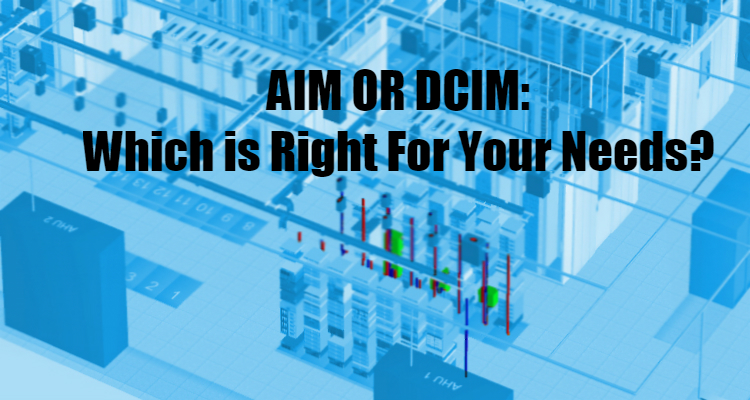In this competitive age, where organizations are fighting neck-to-neck to be on the top, even a slightest change in productivity can make a lot of difference in terms of profit and loss. To remain competitive in the market, businesses need to continuously look for new, innovative approaches that can strengthen their efficiency level. Data centers demand constant, accurate and efficient asset management. Intelligent information infrastructure management can cut down business cost by nearly 30%, but for that you need to pick up the right tool. Here's a brief on Automated Infrastructure Management (AIM) and Data Center Infrastructure Management (DCIM), and what can better suit your business.
DCIM
Data Center Infrastructure Management combines a range of physical infrastructure features that further allows the end-user to efficiently keep a check on all the components such as calculating energy usage, assessing risks, recognizing inefficiencies and to patch the loopholes. With this technology, users can boost performance and efficiency level and help keep the data center aligned with existing requirements. If applied properly, DCIM can be beneficial for your business.
Firstly, it can prevents interdependence in the environment. This means that it identifies interdependent nodes in the infrastructure and enables you to deploy redundant equipment, which avoids failure of a single node to cause a massive downtime and impede operational activities. Next, DCIM gives you the flexibility to monitor energy usage in the infrastructure and find approaches to reduce it that can help cut down your company's carbon footprint. In addition, it detects components in the environment that constantly overheats and to prevent further damages, it recommends changes such as rearranging servers to increase ventilation.
AIM
DCIM can certainly increase efficiency level, but IT operators fail to take complete advantage of it as they concentrate more on aim-benefits only, which one of its many functions. If a DCIM system is put to monitor more number of features, chances are it won't be able to work to its full potential. AIM was developed to work out this issue.
Automated Infrastructure Management enables users to detect and monitor changes to a physical network that includes servers, switches and patch panels. AIM collects data about cables and delivers real-time status on cabling infrastructure. AIM systems consolidates to provide connectivity information into the DCIM solution. Besides, these systems enhance efficiency and promote continuous management of the infrastructure. AIM provides critical features for mapping, analyzing, managing cabling and network instances.
So which is right for your business?
DCIM suits most of the business strategies, but choose this particular system only if your business requires that amount of resources as DCIM is a huge investment. But it all depends on your organization's requirement. First determine what your business needs and what can ideally fit the demands and then make a decision.

